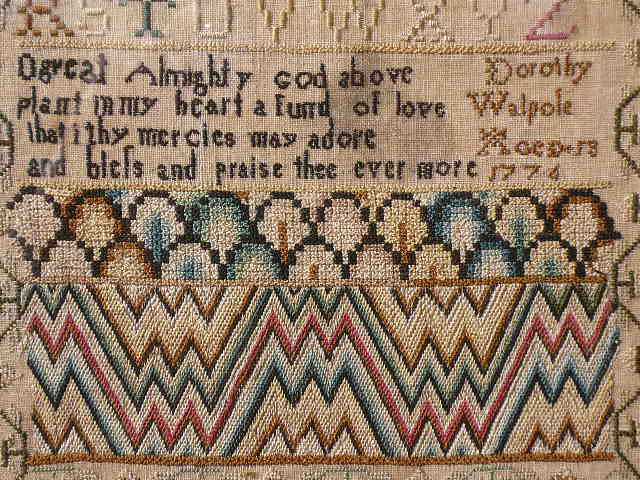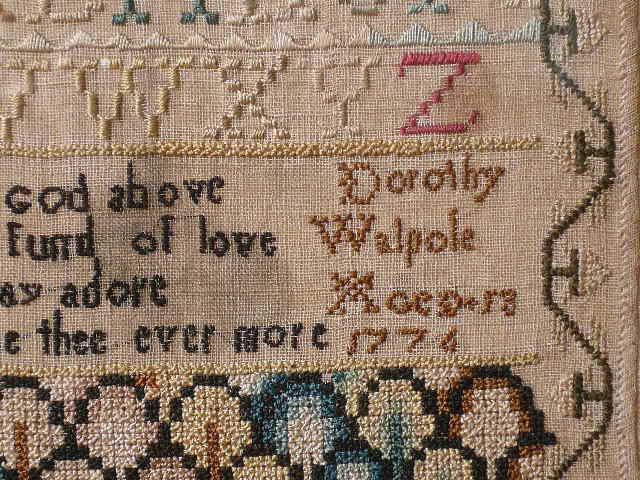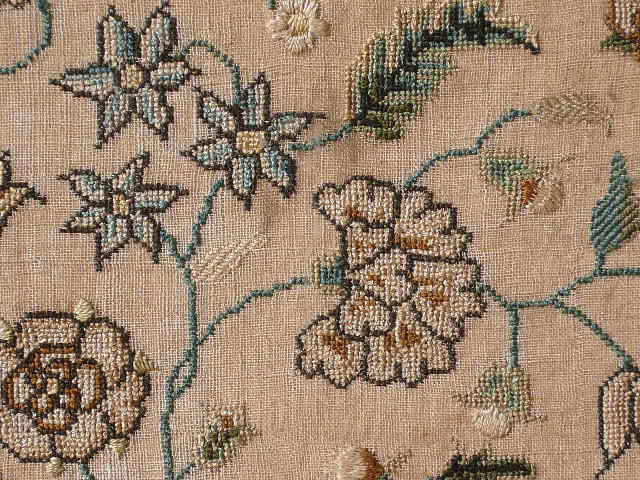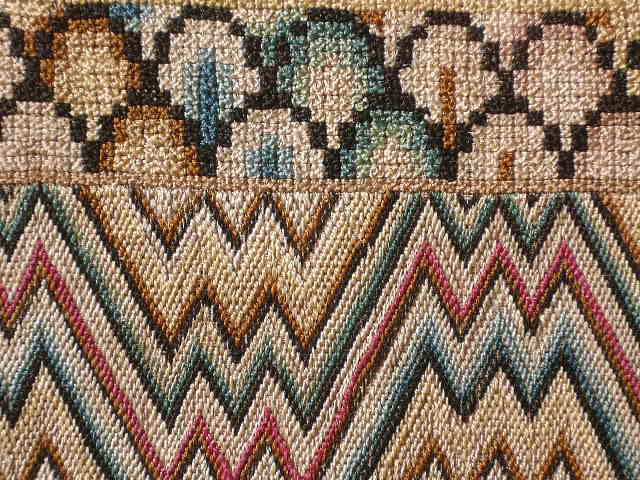Dorothy Walpole 1774
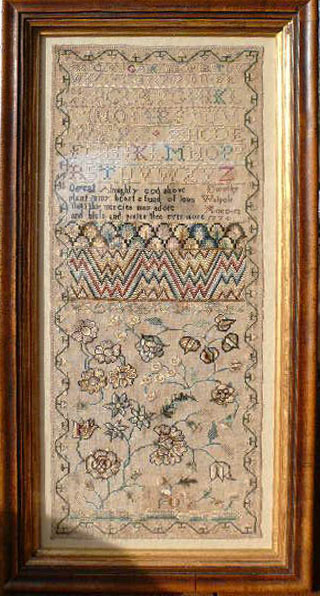
An Irish sampler, made by the mother, and including three samplers made by Dorothy Walpole’s daughters, two by Mary Williams dated 1804 and 1805, and one by Elizabeth Williams, dated 1804.
It is rare to find family groups of samplers particularly those which span more than one generation. This rare group of four Irish samplers provide a tangible record of the education received by Dorothy Walpole in eighteenth century Ireland and later her daughters, Mary and Elizabeth in the early nineteenth century.
Dorothy Walpole was born in New Garden in the Painestown Parish of Carlow, Ireland. On August 25th, 1793, she married Christopher Williams also of New Garden. This was home to a large Quaker community and although we have been unable to find conclusive evidence of Dorothy and Christopher’s religion it seems highly likely that they were from Quaker backgrounds. Indeed a number of Quakers from this community had founded a Quaker community in Chester County, Pennsylvania in 1712 and named it New Garden.
Where Dorothy worked her sampler is not known but it seems likely she attended a small private school in the locality. Certainly Dorothy’s family owned land in the area and enjoyed a reasonably comfortable lifestyle.
Embroidered on unbleached linen this attractive band sampler is stitched with colored silks with all four edges neatly turned and hem stitched. The sampler itself displays Florentine, cross, eyelet and satin stitches with the lower register filled with flowers and vines reminiscent of crewel work. It is in very good condition with some minor staining in the verse which reads as follows:
O great Almighty God above
plant in my heart a fund of love
that I thy mercies may adore
and bless and praise thee ever more
Dorothy’s two daughters Mary and Elizabeth worked their samplers at a school in Mountrath in the adjoining County Laois between 1804 and 1805. In 1809 Mary Williams worked an exquisite map sampler of Ireland (currently in the collection of Witney Antiques). Not only do their samplers provide evidence of the development of their needleworking skills but their existence also enforces the belief that maps were frequently one of the final tasks executed by young females while at school. The precise school is not named on any of the WIlliams samplers but we do know that in the early nineteenth century there were a number of schools serving both thge Catholic and Protestant communities. There were also a number of schools which catered for other religious communities, namely Quakers. Note the third and seventh alphabets on Mary’s sampler of 1804, and the conjoined vowels after the fourth alphabet stitched in the style of Quaker needlework. Dorothy and Christopher Williams also had two sons, George and James, who went on to found successful businesses with their cousins Robert and Albert Woods. Records also name two well known Quakers, John Grubb and Walter Cecil Goodbody as being associated with these business, further evidence of a Quaker connection to the Williams family.
All four samplers have been professionally conserved and mounted to museum standards. Only Dorothy Walpole’s sampler is framed, and the framed size is 12″ x 23-1/2″. Mary Williams’ unframed sampler of 1804 measures 14″ x 11″, the sampler of 1805 measures 15″ x 13.5″. Elizabeth Williams’ unframed sampler of 1804 measures 15″ x 13.5″.

